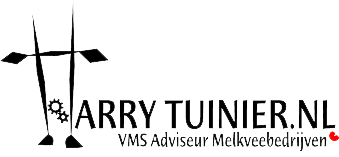The 100th tip of the month!
This month is dedicated to the 100th tip of the month on this website. The writer hopes you enjoy reading them and that you’ll profit from these tips. Do you have any tips yourselves? If you learnt anything from practice that you’d like to share, it is greatly appreciated!
Work less on the computer and go see more!
Many dairy-farmers sometimes sigh during my visit: “There’s a lot of things that are possible.
I should actually be working on the computer more, but I just don’t feel like doing that.”
My idea: Don’t work more but more efficient and structured on the computer!
So: Do the 2-Minute-Check before you go cleaning the boxes, or before making your evening round (See tips from January, February and March 2018). This is the easiest way to combine the eyes of the farmer with the information you get from the computer.
Also, check the ‘Feed control list’ that is tailored personal to your dairy in relation to the amount of sorts of food in the AMS and if you do or don’t have an extra feed station for concentrate in the barn.
Check this list , your personalized Feed control list, to manage the proper feeding and right concentrate fed to the right cow and if consumed.
Fourth important list is the “Milk Performance” list, to check for efficient milkings.
If you have “all time of the world go check all the given Lists.
But if you don’t: Check these four very important lists: Status list, Cow monitor, Feed checking list and the Milking Performance List.
But these four you need to check very regularly and keep a close eye on them.
Status list and Cow monitor you check a couple of times a day.
For the last two lists, make a habit to check them at a certain point in the week (Monday morning after your coffee, for example).
Now you have minimum computer work for the maximum information of your cows!
Do you want to keep more control while spending less time on the computer?
Send me a message and let me come by so we can discuss how to do that.
One udder inflammation less (or less bad), using concentrated food more accurately and you know you’ll have earned back the visit in no time!






